
Figure 1: Parody recreation of the ‘Dawn of Man’ sequence in The Simpsons S3 Ep8 (1991) dir. Carlos Baeza 
Figure 2: Animal Mother (pictured)
Inscribing violence onto the body of animality and blurring human-animal relations is a recurring theme in Kubrick’s filmography, Full Metal Jacket (1987) dir. Stanley Kubrick
As with the majority of Stanley Kubrick’s filmography (we’ll mutually agree to exclude Fear and Desire from this conversation), 2001: A Space Odyssey has been subjected to extensive film analysis and criticism. This article will explore the implications of the film’s perpetuation of sociologically-constructed human-animal boundaries in order to articulate the commonality of violence across species in the ‘Dawn of Man’ sequence. By equipping the Ape (Moonwatcher) with an anthropomorphic adoption of weaponry and technological creativity, Kubrick utilizes overtly cinematic and theatrical cinematography, editing, and sound in this sequence in order to evoke the interchangeability across the discourse of species. As a result, the uniqueness of Kubrick’s portrayal of human-animal relations derives from the novel perspective he offers on the ability to manipulate the body of a relatable species (Ape) in order to articulate innate, fundamental truths about the human experience by forcing us to evaluate the role of violence in human evolution. Whilst Moonwatcher is endowed with anthropomorphic agency, the Ape and human audience are both ultimately subjected to a state of powerlessness beneath the intellectually advanced monolith (pictured in Figure 3)
Its origin and purpose are a total mystery” – Dr. Heywood Floyd, 2001: A Space Odyssey (1968) dir. Stanley Kubrick
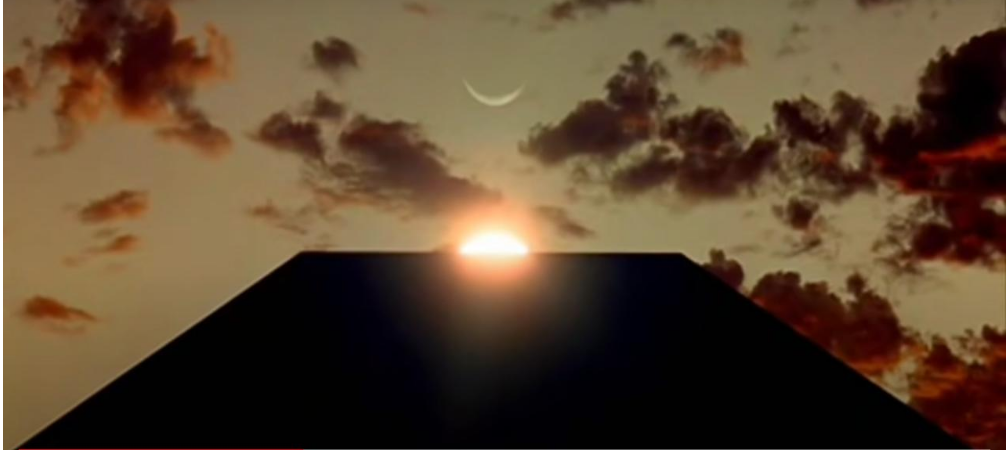
Figure 3: Mysterious Monolith, 2001: A Space Odyssey (1968) dir. Stanley Kubrick 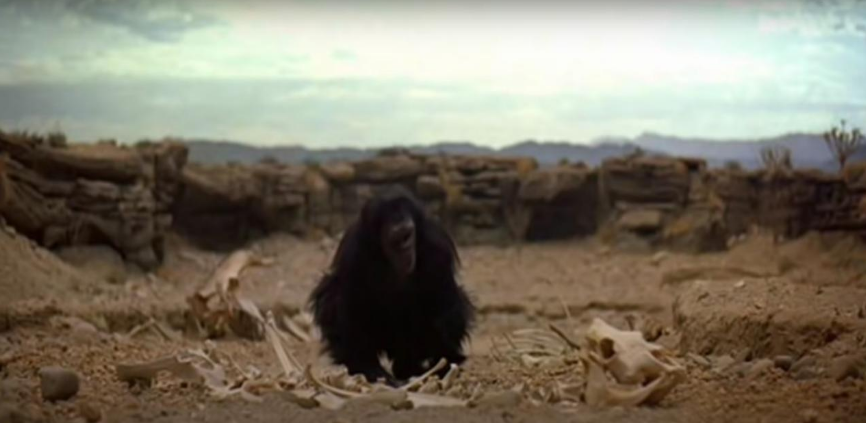
Figure 4: Moonwatcher’s discovery of weaponry, 2001: A Space Odyssey
Kubrick frames the coalescence in species evolution, forcing the human audience to become observational and subordinated spectators, by subverting the conventional power dynamic of the human-animal relationship through the use of a static tableau longshot of Moonwatcher’s discovery of weaponry in Figure 4. Cross cutting the low-angle shot of the monolith (Figure 3) with the tableau long-shot in Figure 4 distills Moonwatcher’s anthropomorphic weaponization of the bone, a visual reminder of both human and animal mortality which works to intimately link and blur the human-animal species boundary by identifying a commonality, with theatrical sensibilities. This is because the static nature of Kubrick’s camera, paralleled with the use of a sound stage with front projection, subordinates the human audience beneath his animal characters. Consequently, Kubrick further blurs the boundaries between humans and animals because they both possess a commonality of overwhelming powerlessness to the monolith, as exemplified in the static wide-angle long-shot in Figure 4 which frames Moonwatcher as a subject to external forces. As a result, in this sequence Kubrick specifically works to blur the species boundary through projecting fundamental truths about the human experience and its links with violence through an identifiable body of animality (Ape).
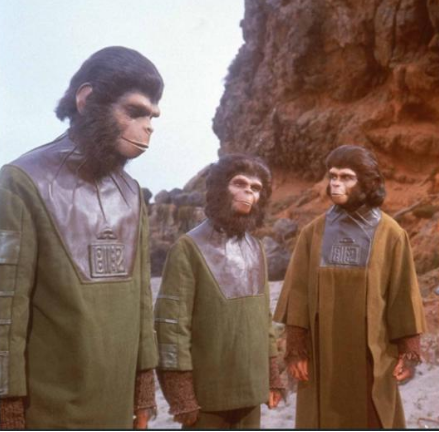
Figure 5: A comparably evolved, cinematic depiction of Apes with pre-established anthropomorphic qualities in Planet of the Apes (1968) dir. Franklin J. Schaffner
Richard Strauss’ ‘Also Sprach Zarathustra’ theatrical non-diegetic score transposes Kubrick’s representation of Apes, foreshadowing Moonwatcher’s revolutionary discovery of weaponry and violence, into an overtly theatrical evocation of the human and animal experience by depicting their equitable powerlessness to the monolith’s advanced technology. Though released in the same year as 2001, there can be noticeable similarities drawn to Schaffner’s Planet of the Apes (1968) which similarly explores the nature of evolution through a reversal of conventional human-animal power dynamics. However, Schaffner conspicuously endows his Ape characters with pre-established anthropomorphic qualities. Whilst Kubrick attributes the inception of violence to Moonwatcher and the species of Apes, illustrated in the jarring low-angle slow motion sequence in Figures 6 and 7, he subordinates the human audience cinematically through the use of low-angle shots and subsequently instills Moonwatcher with an anthropomorphic, ostensible sense of agency whilst we are powerlessly subjected to the violence on screen. Despite this subversion in socially-normalized human-animal power dynamics, the camera’s progressively subjective point-of-view (expressed in Figures 6 and 7) inadvertently accentuates the Ape’s relatability because Kubrick characterizes him as a typically ‘human’ character as he is offered a subjective cinematic vision often synonymous with human protagonists. As a result, Kubrick offers a multifaceted representation of archetypal human-animal relations and a meticulously novel perspective that operates by conveying fundamental truths about the links between the derivations of violence and the human experience through a conceptually relatable species.
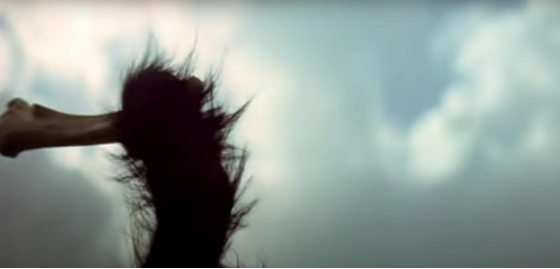
Figure 6: Close-up of the weaponized bone in 2001 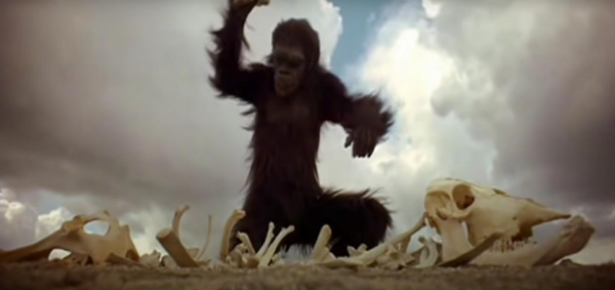
Figure 7: Low-angle shot of Moonwatcher in 2001
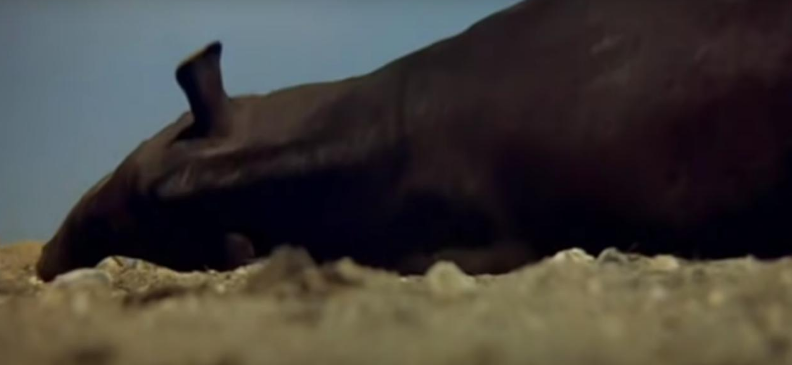
Figure 8: Dying Tapir in 2001
Cross-cutting to a dying Tapir (highlighted in Figure 8), deploying unsettling slow-motion shots, and utilizing Strauss’ overtly theatrical classical music infuses Moonwatcher’s discovery with grandeur and this profound step in evolution once again reinforces Kubrick’s blurring of the human-animal species boundaries. He imposes the notion that violence and the discovery of weaponization is an inherent derivation of both human and animal evolution and this specific sequence of shots encapsulate Moonwatcher, albeit temporarily and perhaps ironically with a literal reminder of mortality in his grasp, defying the inevitability of death. Meanwhile, the subliminal horror and disregard for the Tapir’s death is offset by the overwhelming score, cinematography, and editing which compels the human audience to critically re-evaluate their own perceptions of human-animal relations, human superiority, and forces them to confront the evolution of violence.
Filmography:
Kubrick, Stanley, dir., 2001: A Space Odyssey (Metro-Goldwyn Mayer, 1968)
Kubrick, Stanley, dir., Full Metal Jacket (Warner Bros. 1987)
Schaffner, Franklin J., dir., Planet of the Apes (20th Century Studios, 1968)